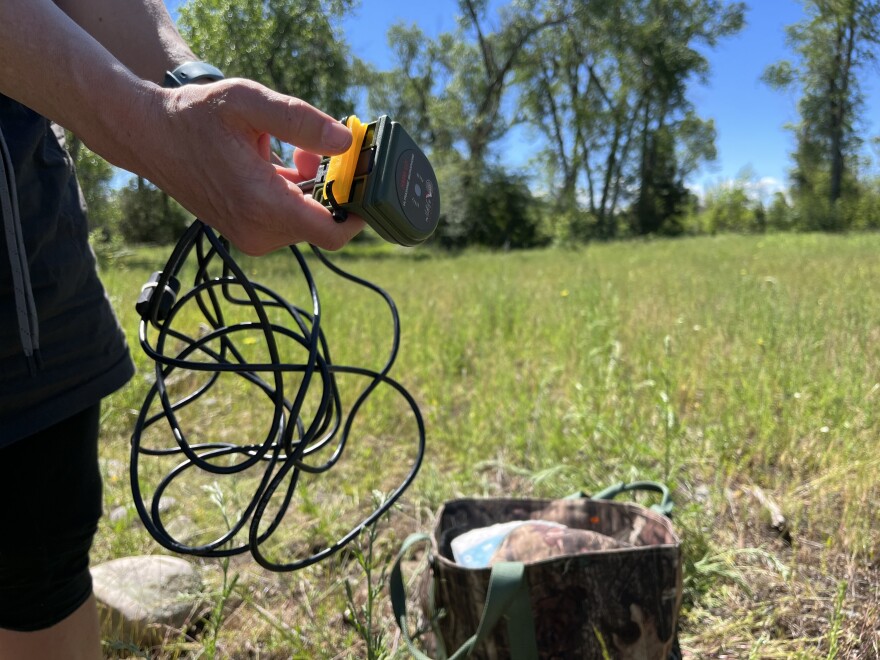On one recent week day, researchers with the U.S. Geological Survey and Montana Fish Wildlife and Parks walk into a forested clearing just outside of Bozeman to reach a microphone zip-tied to the top of a 10-foot pole.
The microphone has been recording bat calls — the researchers have to use a computer to process the high-frequencies to a pitch humans are able to hear.
The group is collecting search calls for the North American Bat Monitoring Program, an intergovernmental project that maps bat distribution and density.

Unlike on the East Coast where many bats spend the winter in caves, bats in Montana hibernate in scattered populations, which makes them — and diseases — harder to track.
Fish, Wildlife and Parks ecologist Emily Almberg says the state is using tools like the monitoring program, sample collection and surveys to try to get a grasp on white-nose syndrome and how it might be spreading.
“We don’t have absolute count information about any of our bat species," she said. "That’s one of our struggles. So we don’t know exactly what we’re starting with."
Two years after the fungus that causes white-nose syndrome was first detected in Montana, biologists say the disease that decimated bat populations in the eastern U.S. is moving west.
The disease was most likely the cause of a mass die-off this year at Azure Cave, the western U.S.’s largest winter habitat for the Little Brown Bat.
“When the crew went back this year, they did see evidence of a large number of dead bats, and they found 30 or 40 bats on the cave walls,” Almberg said. “Historically, they have gone in around the same time and done counts, 1700 to 1900 bats, so just that single comparison pre- versus post- suggests there’s been a big change.”
There are 15 species of bats in Montana and nearly 50 in North America. Jeremy Coleman, the national white-nose syndrome coordinator for the U.S. Fish and Wildlife Service, says biologists don’t know exactly what the disease will look like in native species as it spreads to other regions.
“We are very concerned about these Western endemic species to learn what's going to happen to them, how they're going to respond to the infection," he said.
Coleman says the disease appears to move roughly 250 miles every year.
“What we have been seeing in the Upper Midwest and then into the Rocky Mountain States is what appears to be a similar, familiar steady progression westward," he said.

And that progression could have a major impact on Montana. Almberg says bats play a role in the state’s ecosystem and economy. The animals eat vast quantities of insects that plague humans — like mosquitoes — and also a large number of agricultural pests.
A 2011 research paper in Science magazine estimated the disappearance of bats off the North American landscape could mean $3.7 billion dollars in annual agricultural losses.
Almberg says biologists hope to use information from samples and other data they've been gathering in the field to better understand white-nose syndrome — and come up with strategies to help Montana’s bats recover.




